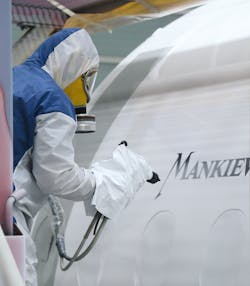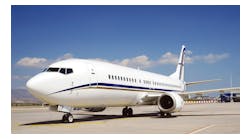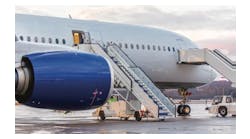New Technology from Germany
The Germany-based paint specialist, Mankiewicz delivers paint solutions for aircraft exteriors and interiors. Paint has evolved over time and has functions today, not known before, bringing apparent and hidden benefits.
New Generation of Germ-Reducing Coatings
With an antimicrobial, FST Coating, Mankiewicz declared war several years ago to germs inside the aircraft.The second generation of this paint, called ALEXIT PureGuard, is now coming to the market preventing mold and odors, further helping to improve in-flight hygiene. The new generation, the ALEXIT PureGuard, will be debuted in April at AIX 2019, Hamburg,Germany, fitted with active antimicrobial agents to protect the dried paint film. It contains special chemicals that hinder the spread of mold and unpleasant odors, and in this way the paint contributes to hygiene of aircraft surfaces in areas like lavatories, armrests, etc. According to the manufacturer, their coatings don’t have any toxic side effects.
The predecessor paint was available as a textured or smooth topcoat in a wide color range. The new generation is now additionally available as a clear coat which opens up many new possibilities for use. The clearcoat can be applied onto almost any surface or substrate like foil, existing paint, or plastic surfaces. The clear coat is colorless and does not adversely affect the appearance of the treated surface.
Smooth Surfaces for 3-D Printed Components
The modern 3-D-printed components don’t have really smooth surfaces as parts being "grown," through point by point laser melting, have a relatively rough surface, with deep furrows, so it is usually necessary to treat them with fillers. Mankiewicz has developed a special product for aviation with a remedy to this problem. In order for the paint to achieve a shiny and smooth surface it is necessary to first eliminate the furrows with fillers. As they are deeper than the unevenness normally found on aircraft components, a larger amount of filler material is needed. When applied in thicker layers, many fillers no longer pass the heat release rate test and so are unsuitable for the aviation industry. The new Mankiewicz filler passes the heat release rate test.
Paint Curing at Fingertips
Last but not least, Mankiewicz says it has developed a revolutionizing new coating which will enable a fully customized curing behavior of paint for aircraft exteriors. This product aims to revolutionize how coatings are applied to aircraft exteriors. The project is called “Snap Curing” and its special formulation permits a very accurate, custom setting of the drying time. What at first may not sound so spectacular, according to Mankiewicz, is in fact a revolutionary step forward for aircraft manufacturers and MROs alike, because the drying times of paint have often given rise to difficulties in the past. While the paint applied on small parts can dry fast and preferably immediately, for larger surfaces of aircraft it is better when it stays "wet" longer, because it is not possible to achieve a perfect surface quality when the paint begins to dry before the coating process is finished. If the paint dries too fast, faults and irregularities can appear; when it dries too slow, this lead to delays.
The Snap Cure technology allows for the customization of the drying behavior, based on the unique resin technology. The special chemicals inhibit the cross-linking reaction in the paint and the amount of chemicals added allows precise adjustment of how long the paint reaction should be delayed. The paint open-time of 15 to 90 minutes can be precisely set so the coating remains fully uncured and able to accept an overspray from the surrounding surfaces. After the chosen time, the coating cures instantly, reaching the fully cured stage within 20 minutes.
The result is similar to UV curing, but Snap Cure requires no external trigger, so investment in UV drying systems is obsolete. Additionally, the pot life can be set independently of the drying or open time; up to now pot life of up to 12 hours has been realized.




